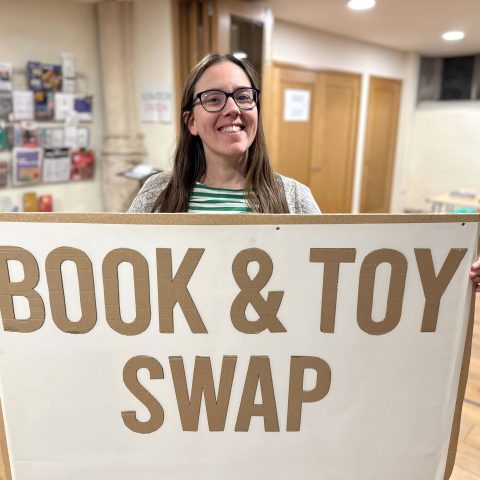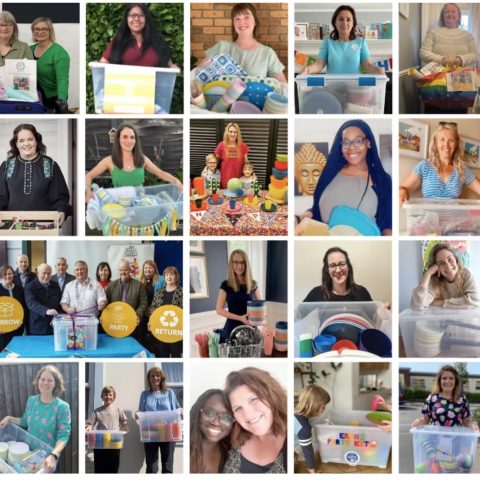What More's story
The journey to reduce our carbon and environmental impact started when we began recycling 100% post-industrial plastic and products that didn't meet QC standards. Transferring out waste to a recycling centre, it is processed (along with material from other companies) to create our Wham Bam material, which we then mould to manufacture boxes. By repeating and refining this process, we realised the true potential value in our waste.
Our initiative to manufacture and introduce upcycled products to our range started in early 2018, after a ban on importing plastic from China. The UK had not dealt with its single-use plastic problem in a sustainable way; either landfilling or incinerating - a long-term solution was needed. Responding to the change in policy, we worked directly with recyclers and material scientists to trial and develop a process which is commercially viable.
The need to develop this process was twofold. Firstly, we wanted to innovate by transforming what others consider waste into valuable products: contributing towards the circular economy and putting less pressure on limited resources. Every tonne of up/recycled material we process into durable, long-lasting boxes is a tonne of plastic not dumped on a landfill site or incinerated (polluting toxic fumes) or oil extracted, refined, transported and processed into virgin material. We estimate that the CO2 emissions from producing up/recycled material are between 6 - 7.5 times less than virgin material - which is a huge positive! In fact, by using these materials, we effectively eliminate 63% of the CO2 emissions related to the entire plastic value chain - from the initial production phase of plastic. Secondly, we understand the growing concern people have for sustainability (specifically the single-use plastic crisis) and we felt it our responsibility as a plastics manufacturer to provide our customers a solution made out of the problem.
Using more upcycled and recycled materials has allowed us to offer an ever-expanding range of products to our customers that have a much lower carbon and environmental impact. We are proud that our range has expanded to over 100 products. With the help of our suppliers and team we can continue to expand our production and contribute towards a circular plastics economy with a smaller carbon footprint.
Useful learnings from What More
For companies looking to undertake a similar venture (or any initiative to improve sustainability) I would suggest the following:
Information is paramount in this day and age, so engaging and working with others is key. This will give you a valuable insight into what works, what people want and how to achieve your project goals. Moreover, you can help to spread the positive message and gain traction and support for your project by engaging with local groups. Helping to educate local people on misconceptions about plastic was also a fantastic way of gaining support for our upcycling and recycled products. Many people simply didn't understand the difference between the properties of our plastic and a throw away plastic bottle. By engaging people on the difference between the lifecycles of the two groups of plastics, we have gained enormous traction which is partly demonstrated by our huge increase in production of recycled and upcycled products.
Research is crucial to setting realistic targets and goals for your initiative. Researching what has been done previously, what has been unsuccessful and what has not yet been tried can all help to direct your projects. Specifically, I would research the underpinning need to change (why exactly it is important), the commercial viability and the likely sustainability impacts your initiative may have. Our research included the scale of the single-use plastic problem, the entire recycling/upcycling process and the physical and quality aspects of re-processed materials.
Although we manufacture plastics, we are by no means experts in its chemistry. Once you have a concept for a project, find the best people for the job to refine and streamline your process so that you achieve the best result.
Understanding the true extent of a problem will help with finding the best solution. By measuring every possible parameter, you will gain a bigger picture of how to tackle an issue. In our case it involved measuring our scrap output, supply of external recyclates, greenhouse gas (GHG) emissions, production capacity of recyclers, our own processes for manufacturing this new material, production efficiencies and market research. Once everything is measured the whole process can be refined to achieve the best possible result and continuously improve.
What More's metrics
CO2 emissions mitigated from virgin PP production (4,068 tonnes).
Range of products offered and types of material used.
Tonnage of material processed year-on-year.
Percentage increase of recycled/upcycled materials processed on last year (135%).






